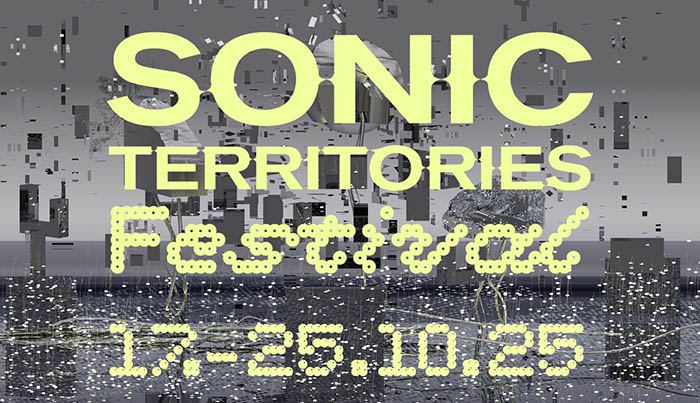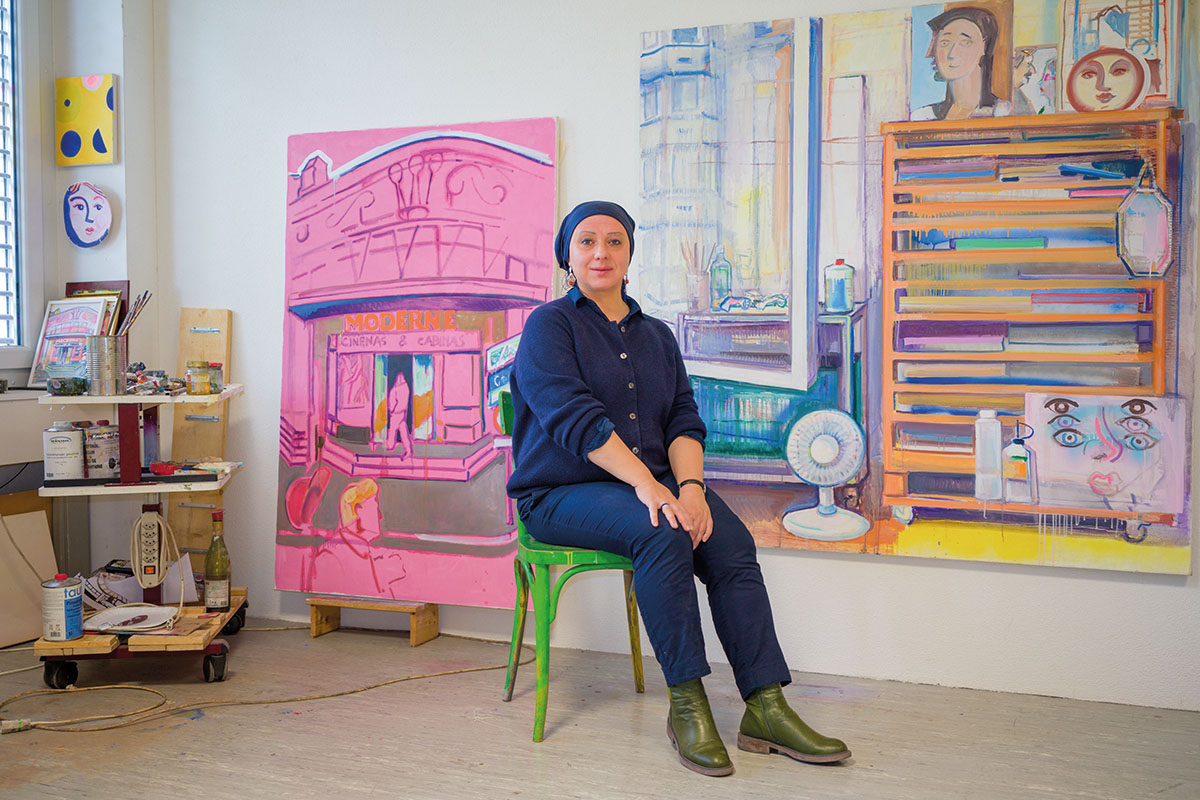
Your recent exhibition at BELETAGE is titled ‚Nothing Personal‘. What does this phrase mean in the context of your work, especially considering that most of the pieces are portraits?
The title of the exhibition was conceived with sarcasm, as if to say, „Nothing personal, “ but in reality, everything shown there is exclusively personal and was created as a result of various circumstances in my life, encounters with certain people, or facts of certain adventures and life events.
For me, portraiture is like a parallel genre. I paint many portraits partly to maintain a creative dialogue with people in the arts (artists, curators, musicians, writers), with whom I have a great and important connection. Portraits from life are not a quick task; even the fastest and most expressive portraits require at least three hours of posing, which means interesting and meaningful conversation. Some of the models posed several times.
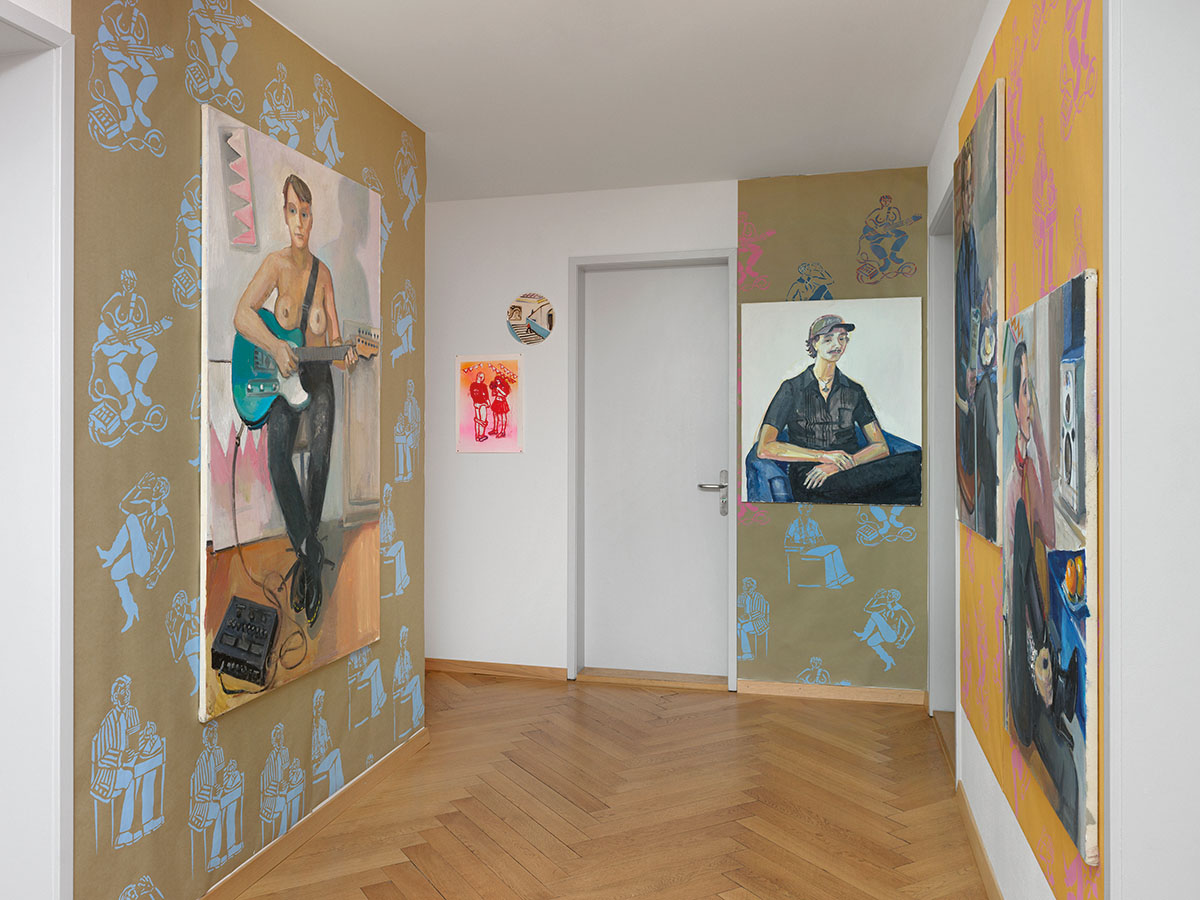
courtesy BELETAGE, Zurich
Sometimes I meet strangers at exhibition openings or other events, and something about their appearance or behavior intrigues me, so I ask if I can paint their portrait. They usually agree, and this gives us a reason to get acquainted. During the three hours spent painting a portrait, a person inevitably opens up and talks about themselves. I also talk about myself, and personal contact brings us closer together. In addition, portraits from life are atmospheric. They have many layers and always convey my mood and that of the models. I think you could call it a psychological portrait; I analyze the personality, leaving some things out and emphasizing others. I don’t always strive for complete portrait likeness— some portraits are more similar, some less, but it’s always my version of that personality.
I exhibit a lot of my marker drawings in A4 format as well. There are also a lot of people in these drawings, but they are in certain situations, in the process of working, etc. The exception is a collaboration with artist and art mediator Esther Epstein. This is a joint project between Esther and me – a triptych. Over the course of several years, I drew her portraits, and in each of the three portraits, Esther is in different roles, and by portraying her, I ended up portraying the time that changes us all. These three portraits are quite well-known and have been exhibited several times.
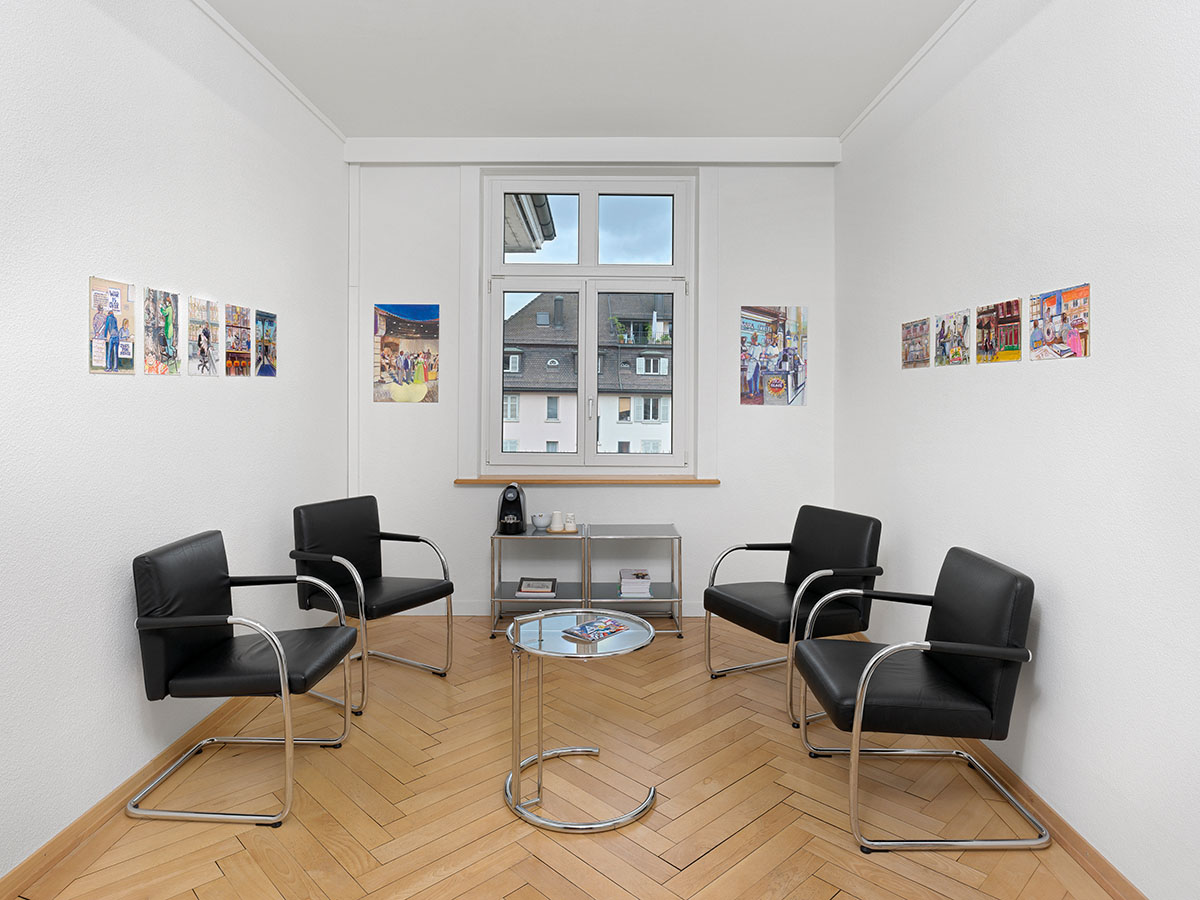
How important is your relationship with BELETAGE Art Space to you? What opportunities does this collaboration open up for you and your work?
Behind the name BELETAGE Art Space is a very special person—Jeannette Weiss, a top-level professional. Working with her has been a great pleasure, and I hope our collaboration will continue. Even during the preparation phase for the exhibition, in the process of numerous brainstorming sessions and discussions, I noticed that Jeannette fully understood and supported all my ideas and concepts, and we managed to combine several different series of works into one concept for this exhibition. And so it happened that works that seemed to have nothing to do with each other were very interestingly strung together on a common theme. This included her determination to show so many portraits at once. Moreover, Jeannette responded enthusiastically to my suggestion to hang the portraits on a wallpaper background (the wallpaper further enhances the effect of the portraits, creating the feeling of an old portrait gallery).
Each exhibition at BELETAGE is accompanied by a publication, which can be an exhibition catalogue or something more abstract, depending on the artist’s wishes. I decided to reflect the leitmotif of our exhibition in the publication: drawings of people from different professions. Our publication easily integrates into a series of my other fanzines from previous projects (about artists, scientists, and so on). In general, working with such specialists undoubtedly inspires creativity.
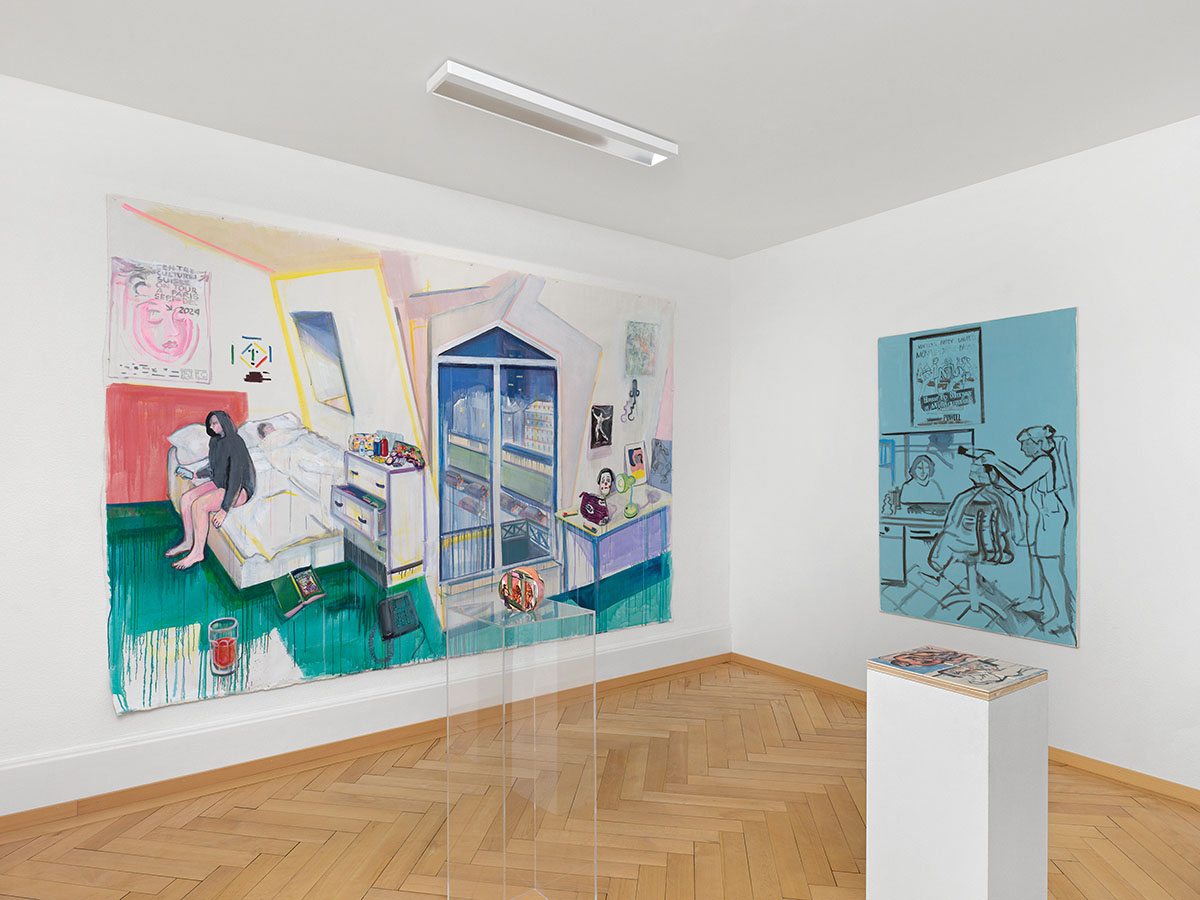
courtesy BELETAGE, Zurich
You often paint cityscapes, portraits, everyday situations, and still lifes. How do you choose your subjects? What attracts you to a particular object?
I painted the interior of my studio in 2022, and among other things, there was a rubbish bag. Now the design of rubbish bags has changed — this is a historic event that must be immortalized. Such trifles reflect the spirit of the times. In this case, the urban rubbish bag reminds us that everything is constantly changing in our surroundings. A big city is a cultural environment woven from quotations. An endless fractal, repetitive and unique, the elements of this endless mosaic suddenly become meaningful to me, and I rush to reflect this in my paintings.
We exist, as it were, in two realities: one virtual – an endless flow of information, sometimes amusing, sometimes frightening, and everyday life, with its cares and concerns.
Many of your works seem to be related to memory, identity, even science, and the urban environment. How do you balance the personal and the universal in your art?
I am a third-generation artist, and my husband is also an artist. I try to maintain a balance; the universe responds to me, but it wasn’t always like that. I love to paint my surroundings, to paint other artists, but I am also curious to discover other professional worlds, and thanks to this curiosity, I often find myself in very unexpected places, and this gives rise to new projects.
Do you think your art has social, political, or critical content? If so, how do you realise this and convey it to the viewer?
All of these elements are definitely present in my work. I’ll start from the end, I believe in intelligent viewers, who sometimes see more than the artist themselves. When communicating with viewers, I am amazed at how they managed to understand and feel things that I hadn’t even thought about.
Well, specifically, it’s different impulses each time — if I’m depicting chemists, I admire their work ethic and perseverance, and I think about how much effort it takes to make even the slightest progress towards some kind of discovery. I am also fascinated by the aesthetics of laboratories, the bright colors of plastic against a light background, and the many glass objects filled with liquids that reflect the light. When I draw a train station with a family of refugees, I think about how someone, for their own selfish interests, drove these people from their homes. I sympathize with the unfortunate and criticize politicians.
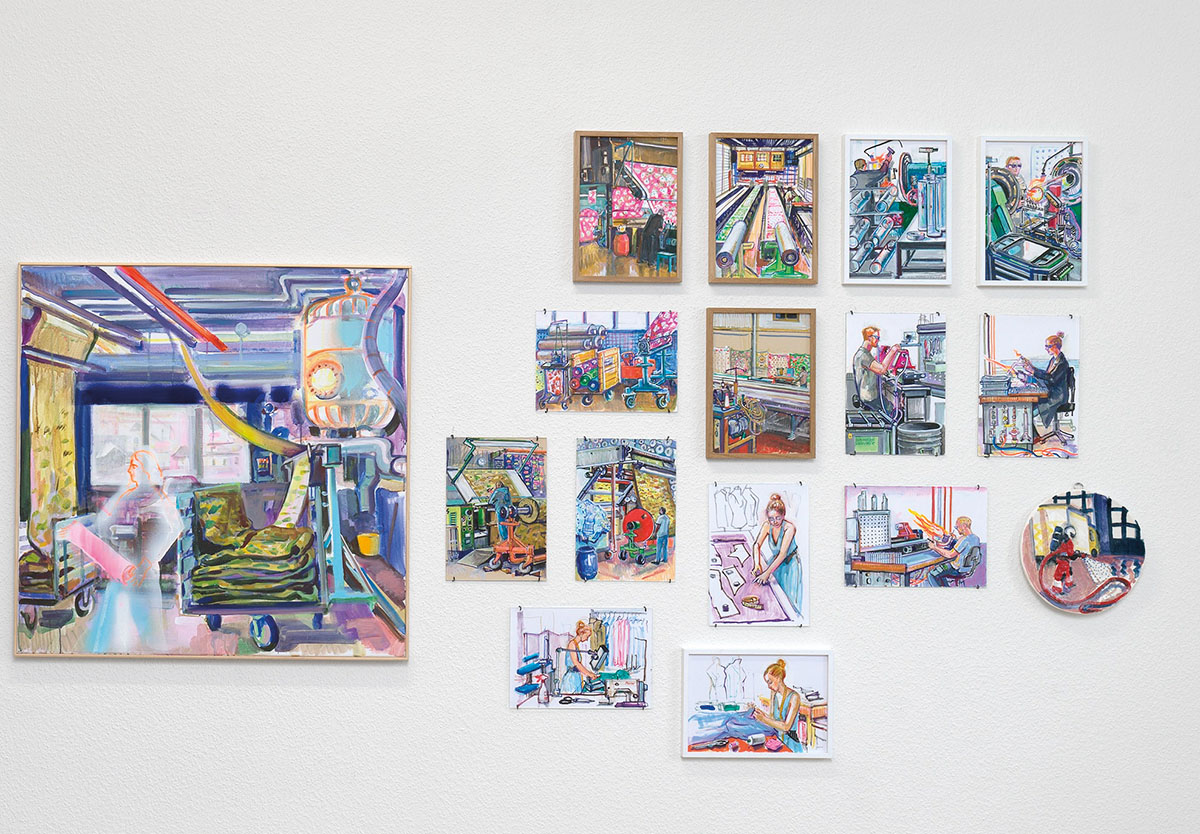
Well, if I depict an industrial motif, I think about deindustrialization and its consequences. Some people think it’s good, some don’t. I am sure that a painting is perceived by the viewer completely differently from a photograph, so I chose realism as my tool. I need to comprehend and share my thoughts.
Your studio sometimes appears as a motif in your paintings. How much time do you spend there, and what kind of environment in the studio is ideal for you to start working?
I love my studio. I am used to separating my work and living spaces—it helps me focus on my work. I’ve changed six studios in 13 years. Each studio is a great adventure, with its own special atmosphere and energy. I spend several hours in my studio almost every day. Even when I’m not working, I might just pop in to make some tea, sit and think, and then move on.
Do you work with models in your studio? Are your portraits based on real people you know, or are they fictional characters?
As I’ve mentioned before, portraits are based on real people. I don’t necessarily paint portraits in the studio; sometimes I go to visit people, but I always paint from life. Working from life is a very specific way of interacting, and it cannot be replaced. Working from life is the main thing; it doesn’t matter whether it’s a still life, landscape, or portrait.
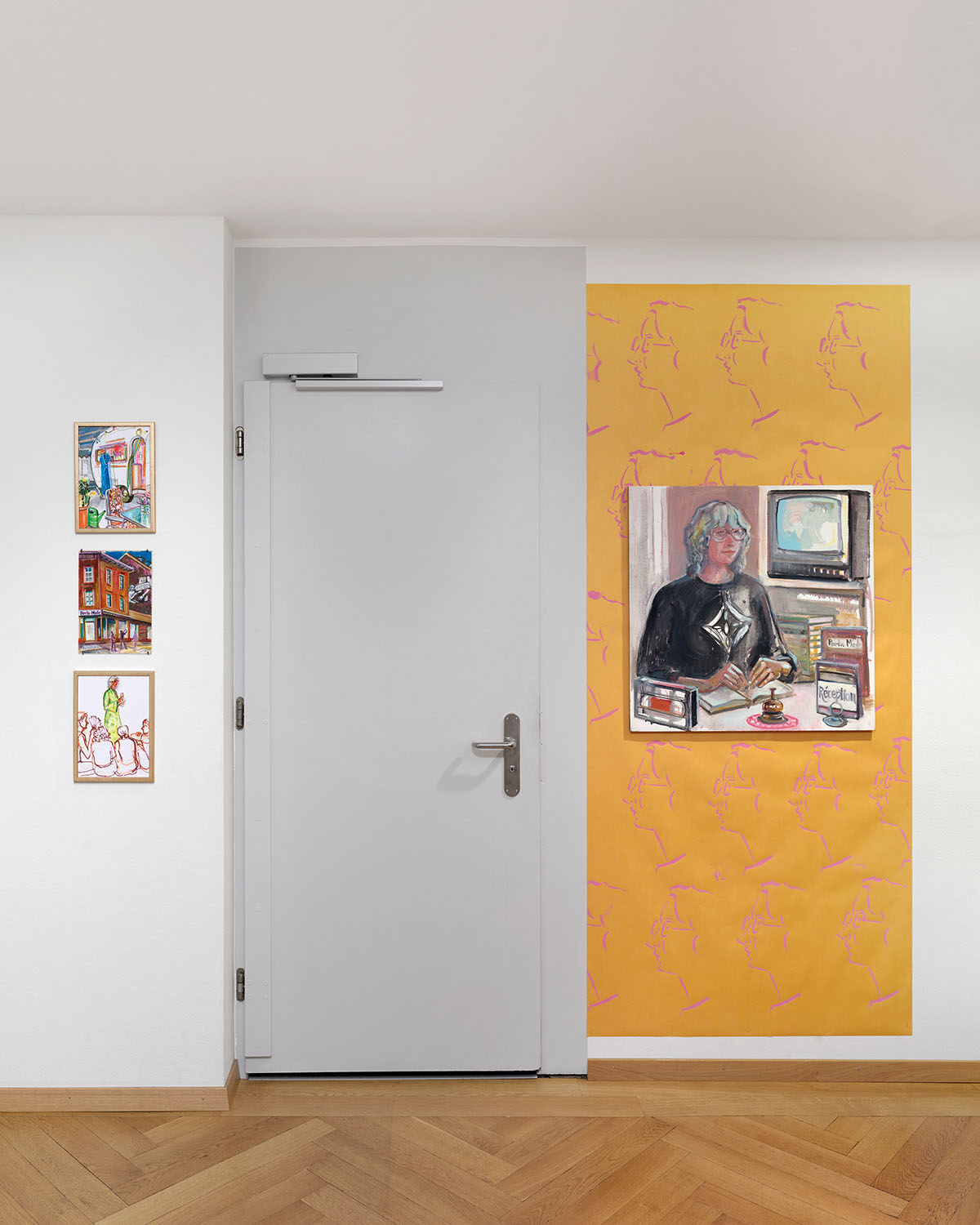
courtesy BELETAGE, Zurich
Your early works often depicted rural landscapes and fairy-tale characters. How did your motifs evolve towards contemporary landscapes and urban scenes? Can you name a turning point or transformation in your work?
You are probably referring to the drawings (and paintings) from the early 2000s. But at that time, my main professional artistic practice was video art, with graphics and painting playing a secondary, nostalgic role. Most likely, the subjects of my drawings and paintings were influenced by Moscow conceptualists, or more precisely, young conceptualists, as I socialized with many artists from this circle in Moscow. They were interested in the fairy-tale and the fantastic, and so was I, although I always sought a connection with events in reality — a magical connection. Fantastic rural landscapes are a tribute to romanticism.
By the end of the 2010s, video art had rapidly evolved into content for social media or large installations requiring enormous technical and financial resources. I was looking for something more intimate, and one of my friends suggested a new concept, a modern approach based on classical realistic painting from life. Realistic painting with a clear conceptual paradigm appealed to me greatly, and I began to explore this direction. I found people who supported me. This inspired me, and I focused on realistic painting, which yielded results.
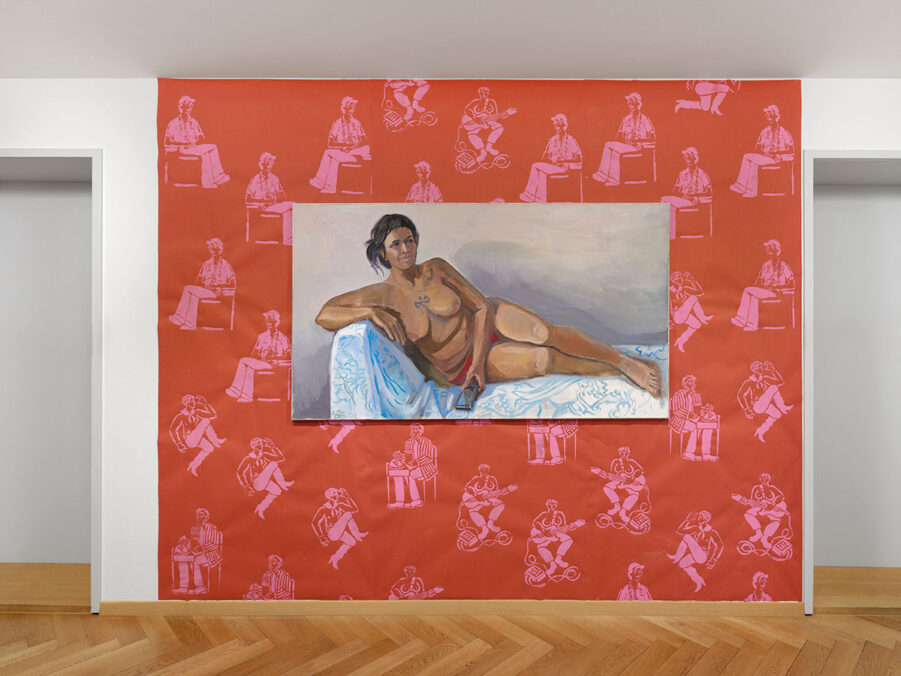
courtesy BELETAGE, Zurich
Some of your paintings have a cinematic atmosphere, as if they were frames from a film.
Perhaps this is because one of my areas of education is scenography, and I have also been involved in video art for many years. Working with video influenced my paintings, and drawing and painting were reflected in the staging of video frames. I learned a lot from working with video, and my video experience expanded the space in my paintings. Sometimes very large paintings look like sets for a film or play, and I like that.
How do you manage to capture movement and stillness at the same time?
I think it’s because of speed. Since I draw from life in different, strange places and situations where no one poses for me on purpose, I need to capture what is happening in a couple of minutes, the essence of the moment when everything is changing very quickly. This creates an impression of lightness and movement.
What do you plan to explore in your next works, in terms of subject matter or form?
I am continuing to delve deeper into the subject of studying different professional worlds. I am working on a large project about firefighters; this time, it will be painting on ceramics. Working on a new technique also allows me to experiment with expressiveness. At one time, I was fascinated by geometric abstractions, and now I am trying to find a new visual language between realism and geometric abstraction.
Solo Exhibition: Maria Pomiansky – Nothing Personal – Porträts verschiedener Berufe
Duration: 05.09 – 24.10.2025
Finissage and Zine Launch with Maria Pomiansky: 25.10.2025
Address and contact:
BELETAGE Art Space
Utoquai 41, C/o Dr. Rai Winata, 4th floor
8008 Zurich, Switzerland
www.beletageartspace.ch
Maria Pomiansky – mariapomiansky.wordpress.com
Maria Pomiansky is an artist who was born in Moscow in 1971. Pomiansky was predominantly influenced by the 1990s. She studied Graphic Design at the Moscow School of Art and Design. She received a Bachelor of Fine Arts from the Bezalel School of Art and Design in Jerusalem. She then continued her studies with a master’s degree in Scenography and a master’s degree in Fine Arts at the Zurich University of Arts in Switzerland. Maria Pomiansky lives and works in Zurich, Switzerland.



